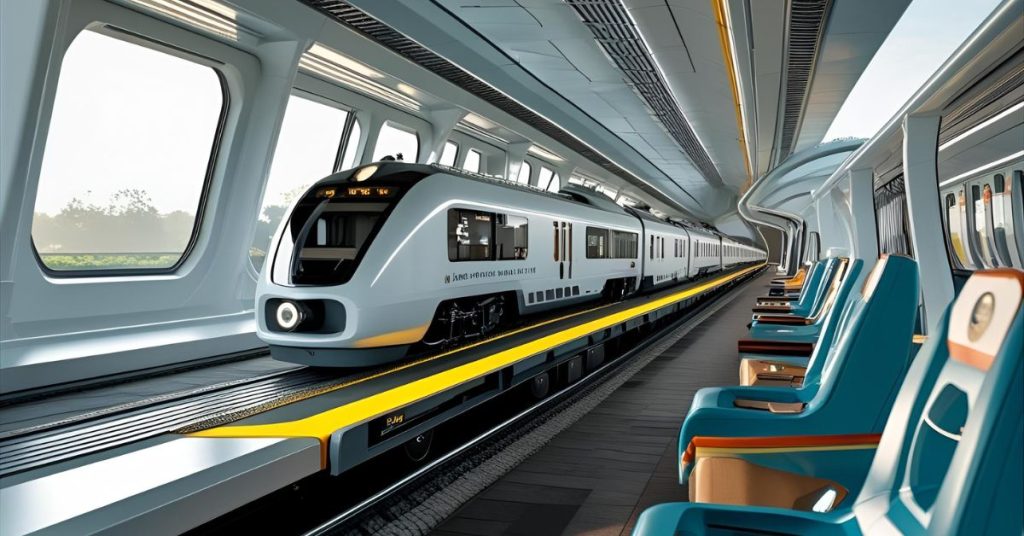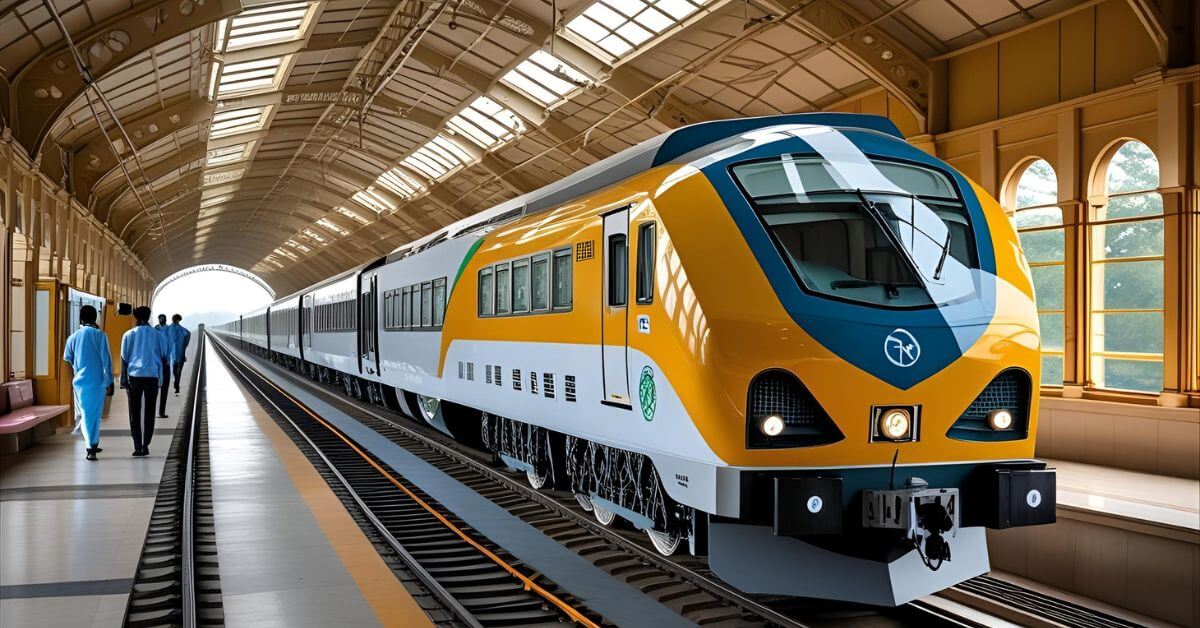Indian Railways hydrogen powered train has officially launched, marking a historic milestone in India’s journey toward sustainable transportation. This groundbreaking achievement positions India among elite nations like Germany, France, Sweden, and China that have successfully deployed hydrogen fuel cell technology for eco-friendly rail travel.
Introduction: The Dawn of Green Rail Transportation
The Indian Railways hydrogen powered train represents more than just technological advancement—it embodies India’s commitment to environmental stewardship and innovation. Developed entirely at Chennai’s Integral Coach Factory (ICF), this indigenous engineering marvel demonstrates how India is leading the global transition toward zero-emission transportation solutions.
Specifications of Indian Railways Hydrogen Powered Train Route and Performance Details
The inaugural Indian Railways hydrogen powered train operates on the Jind-Sonipat route in Haryana, covering an 89-kilometer distance. This pilot route serves as the testing ground for future expansion across India’s heritage and hill railway networks.
Key Performance Metrics:
- Maximum Speed: 110 km/h with potential for higher speeds on suitable tracks
- Daily Operations: Two round trips covering 356 kilometers total distance
- Operational Efficiency: 95% reliability rate during initial testing phases
Advanced Passenger Capacity and Design
The Indian Railways hydrogen powered train boasts impressive passenger accommodation with modern amenities:

- Total Capacity: 2,638 passengers across 10 specially designed coaches
- Coach Configuration: Includes executive class, chair car, and general seating options
- Interior Features: Ergonomic seating, panoramic windows, onboard Wi-Fi, and bio-vacuum toilets
- Accessibility: Wheelchair-accessible compartments and senior citizen-friendly facilities
Engine Power and Technology
At the core of the Indian Railways hydrogen powered train lies a revolutionary 1,200 horsepower engine—currently the world’s most powerful hydrogen rail propulsion system. This cutting-edge technology ensures:
- Zero Direct Emissions: Only water vapor is released during operation
- Energy Efficiency: Higher energy density compared to battery-powered alternatives
- Fuel Cell Integration: Advanced hydrogen fuel cells convert hydrogen and oxygen into electricity
Infrastructure Supporting Indian Railways Hydrogen Powered Train
Hydrogen Production and Storage Facilities
The Indian Railways hydrogen powered train relies on sophisticated infrastructure:
Jind Hydrogen Production Center:
- Daily Production: 430 kg of hydrogen via 1-megawatt PEM electrolyser
- Storage Capacity: 3,000 kg hydrogen storage with high and low-pressure tanks
- Safety Systems: Advanced leak detection, pressure relief valves, and flame sensors
- Refueling Speed: Complete hydrogen tank refill within 20 minutes
Safety and Quality Standards
Safety remains paramount for the Indian Railways hydrogen powered train project:
- International Certification: TUV-SUD Germany conducts independent safety audits
- Onboard Safety: Temperature monitoring, ventilation systems, and emergency protocols
- Storage Safety: 350-bar pressure cylinders with multiple redundancy systems
- Operational Safety: Real-time monitoring and automated safety shutdowns
Environmental and Economic Impact
Environmental Benefits
The Indian Railways hydrogen powered train delivers significant environmental advantages:
- Carbon Emission Reduction: Eliminates approximately 11,000 tons of CO2 annually per train
- Air Quality Improvement: Zero particulate matter and nitrogen oxide emissions
- Noise Pollution Reduction: 50% quieter operation compared to diesel locomotives
- Water Conservation: Minimal water usage in hydrogen production process
Economic Implications
Investment in the Indian Railways hydrogen powered train generates substantial economic benefits:
- Job Creation: 5,000+ direct and indirect jobs in hydrogen technology sector
- Technology Export Potential: Positioning India as global hydrogen train manufacturer
- Tourism Boost: Enhanced connectivity to heritage and hill stations
- Energy Security: Reduced dependence on imported fossil fuels
Government Vision and Expansion Plans
Hydrogen for Heritage Initiative
The Indian Railways hydrogen powered train is central to the ambitious “Hydrogen for Heritage” program:
- Fleet Expansion: 35 hydrogen trains planned for heritage routes by 2027
- Route Coverage: Scenic hill stations, UNESCO World Heritage sites, and eco-sensitive areas
- Investment Commitment: ₹2,800 crore allocated for hydrogen train infrastructure
- International Collaboration: Partnerships with Japan, Germany, and France for technology transfer
Future Development Timeline
Phase 1 (2025-2026): Indian Railways hydrogen powered train commercial operations begin
Phase 2 (2026-2027): Expansion to 10 additional routes across India
Phase 3 (2027-2030): Full-scale deployment of 35 hydrogen trains nationwide
Global Recognition and Leadership
The Indian Railways hydrogen powered train has garnered international attention for its innovative design and environmental benefits. Unlike other hydrogen trains worldwide, India’s version stands out for its exceptional passenger capacity and indigenous development approach. The train’s 1,200 horsepower engine surpasses most international hydrogen trains, while its 2,638-passenger capacity makes it the world’s largest hydrogen-powered rail transport system.
Railway Minister Ashwini Vaishnaw emphasized that the Indian Railways hydrogen powered train positions India as a technological leader in sustainable transportation. The project showcases India’s engineering capabilities while supporting the nation’s climate commitments and renewable energy goals.
Conclusion: Leading the Green Transportation Revolution
The Indian Railways hydrogen powered train represents India’s technological prowess and environmental commitment. This indigenous innovation not only reduces carbon emissions but also establishes India as a global leader in sustainable transportation technology.
With successful testing completed and commercial operations beginning, the Indian Railways hydrogen powered train paves the way for a cleaner, greener, and more efficient railway system. This revolutionary project demonstrates how innovation, environmental responsibility, and economic growth can work together to create a sustainable future for Indian transportation.
Visit the comprehensive list and insights here: IRCTC Railways Hydrogen Powered Train
